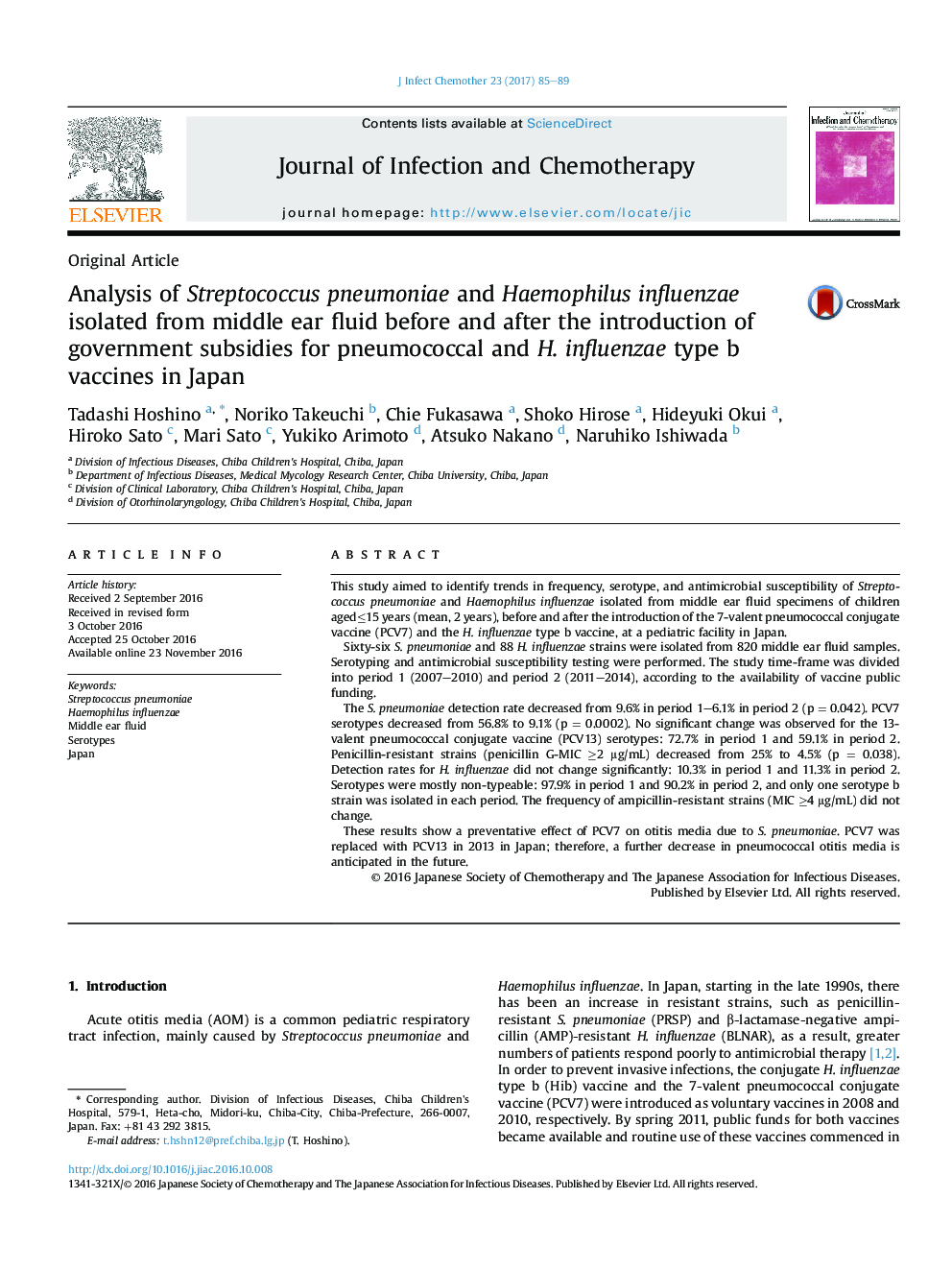| Article ID | Journal | Published Year | Pages | File Type |
|---|---|---|---|---|
| 5668825 | Journal of Infection and Chemotherapy | 2017 | 5 Pages |
This study aimed to identify trends in frequency, serotype, and antimicrobial susceptibility of Streptococcus pneumoniae and Haemophilus influenzae isolated from middle ear fluid specimens of children agedâ¤15 years (mean, 2 years), before and after the introduction of the 7-valent pneumococcal conjugate vaccine (PCV7) and the H. influenzae type b vaccine, at a pediatric facility in Japan.Sixty-six S. pneumoniae and 88 H. influenzae strains were isolated from 820 middle ear fluid samples. Serotyping and antimicrobial susceptibility testing were performed. The study time-frame was divided into period 1 (2007-2010) and period 2 (2011-2014), according to the availability of vaccine public funding.The S. pneumoniae detection rate decreased from 9.6% in period 1-6.1% in period 2 (p = 0.042). PCV7 serotypes decreased from 56.8% to 9.1% (p = 0.0002). No significant change was observed for the 13-valent pneumococcal conjugate vaccine (PCV13) serotypes: 72.7% in period 1 and 59.1% in period 2. Penicillin-resistant strains (penicillin G-MIC â¥2 μg/mL) decreased from 25% to 4.5% (p = 0.038). Detection rates for H. influenzae did not change significantly: 10.3% in period 1 and 11.3% in period 2. Serotypes were mostly non-typeable: 97.9% in period 1 and 90.2% in period 2, and only one serotype b strain was isolated in each period. The frequency of ampicillin-resistant strains (MIC â¥4 μg/mL) did not change.These results show a preventative effect of PCV7 on otitis media due to S. pneumoniae. PCV7 was replaced with PCV13 in 2013 in Japan; therefore, a further decrease in pneumococcal otitis media is anticipated in the future.
